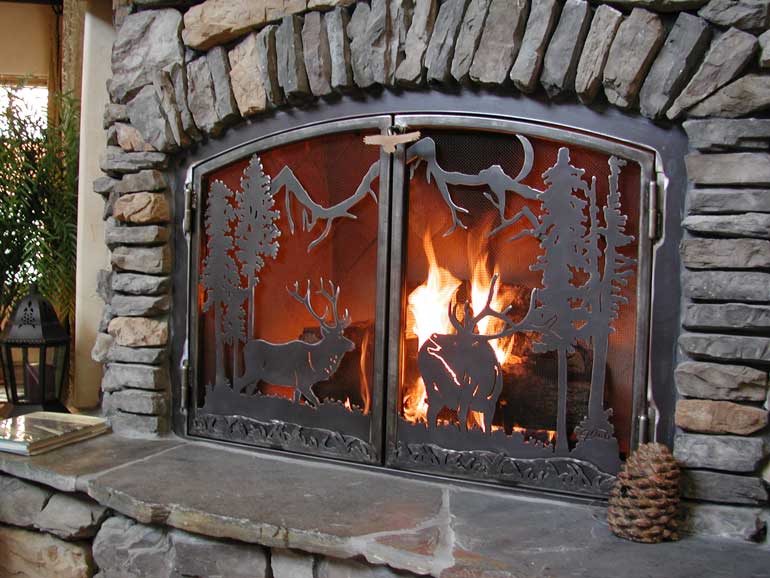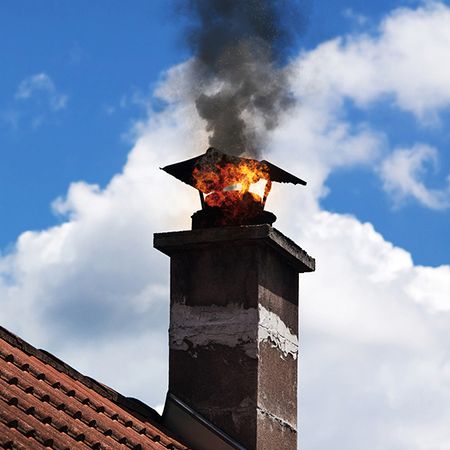Home with fireplace has comfy look that everyone loves. A lot of homes built over the past few decades didn’t include fireplaces in their floor-plan designs. That’s kind of odd, when you consider that a growing number of home buyers consider a fireplace to be a key amenity on their checklists. If you’re living in one of those homes, you may want to add a fireplace and are wondering if this is a feasible idea. Well, you’ll be happy to know it is.
‘Yes, it is possible to add a fireplace in an existing home without a chimney, especially with so many options ranging to include wood-burning masonry and wall- …’ https://happho.com/how-to-install-fireplace-at-your-home/
What You Need to Know About Adding a Fireplace in Your Home
Types of Fireplaces
Fireplaces generally fall into one of three categories: gas, masonry, and zero-clearance fireplaces.
a. Direct-Vent Gas Fireplaces
For the easiest installation, choose a direct-vent gas fireplace. You can install this type of fireplace on any exterior wall, and it will vent directly out the back. Gas fireplace installation usually takes about a day or a day and a half.
Pros:
- Easiest installation
- Can install on any exterior wall
- Vents directly out the back
- Provides ambience
- Often more warmth than wood fireplaces
- Starts with flip of a switch
- Easy to clean and maintain
Cons:
- No crackling wood fire
- No campfire smell
b. Wood-Burning Masonry Fireplaces
To add a wood-burning fireplace, you need space above to get a chimney through the roof. In two-story houses, choices for placing the fireplace might be more limited, but often you can find the 12- to 14-inch space the chimney requires by enclosing a corner of a room or a spare closet. This kind of fireplace comes to mind for most people when considering fireplace installation and is the most expensive. It’s made of a brick or stone firebox, a brick or stone chimney, and usually a wood mantel.
Pros:
- Crackling wood fire
- Campfire smell
Cons:
- Need space for chimney through roof
- Most expensive option
c. Zero-Clearance Fireplaces
If you’re looking for an inexpensive fireplace installation, consider a zero-clearance or factory-built fireplace. These are lightweight fireplaces, often with linear designs to fit more modern tastes. Compared to masonry fireplaces, they’re easier to install and require significantly less construction work. Since their firebox enclosures always remain cool, zero-clearance fireplaces can be installed in any room—even directly over hardwood floors and within a few inches of existing walls. Zero-clearance fireplaces have several available fuel sources, including propane, natural gas, firewood, and pellets.
Pros:
- Inexpensive option
- Lightweight
- Can install in any room
- Easier installation than masonry
- Less construction work
Cons:
No wood fire experience
Where Should I Put My Fireplace?
If you want to get the most use out of your fireplace, plan your fireplace installation in the most-used room in the house other than the kitchen, such as the family room or living room. Putting it in a smaller, easy-to-heat room such as a primary bedroom, office, or spare bedroom is more practical for heating. No matter which room you decide on, make sure its floor joists are reinforced. You should also factor in the firebox’s dimensions and thickness, the damper opening’s size and the type of chimney and liner used.
Refer to your local building codes for detailed specifications for these considerations and the minimum distance between a fireplace and combustive materials. Some building codes require that the house framing be modified to accommodate the increased weight of the fireplace installation. This typically applies to masonry fireplaces, though it may also be necessary for chimney installation.
A huge variety of new fireplace designs and styles
Of course, a fireplace can mean many different things. The type of fireplace you want to add to your home will dictate how simple or complex the job will be as well as the expense involved. If you want an old-fashioned, expansive masonry fireplace with an elaborate brick or stone façade, you’re looking at a sizeable construction project that’s going to cost a sizeable amount of money. For most homeowners, there are better options.
Modern fireplaces – both wood-burning and gas-fueled – are much easier to install than building a traditional masonry unit. Fireplace inserts are even easier, because they’re pre-built from the factory and require only an opening to fit in to.
When you visit your local hearth retailer, you’ll see a variety of sizes and styles of gas and wood fireplaces that could make perfect additions to your home.
Building and zoning considerations
As you plan for your new fireplace, it’s important that you understand the building codes in your area and any restrictions or specifications that would apply to your project.
Some counties and municipalities regulate the allowable emissions levels a home-heating appliance may produce. If you’re going with a wood fireplace, the height and design of the chimney may be regulated in some areas. You can make sure you comply with these and other codes by working with a qualified local contractor or installer who knows the regulations in your area.
Gas vs. wood
This is an important consideration in adding a new fireplace to your home. As mentioned, a wood fireplace requires a chimney, which will increase the project cost and will need to meet local codes. Still, for lots of homeowners, nothing beats a roaring wood fire with its crackling logs and leaping flames.
Gas is an ultra-convenient fuel, and the venting requirements of gas fireplaces make them much easier to install. Some gas fireplaces are vented with a simple pipe, not a full-on chimney. Others require no venting system at all.
Placement
Finally, the location of your new fireplace will affect the complexity and cost of the job. Gas fireplaces, because of simpler venting needs, can be placed in many areas within a home that wouldn’t work for wood fireplaces. Smaller gas units are ideal for kitchens, bedrooms and bathrooms.
A wood fireplace typically will go against a main outside wall so that a proper chimney can be constructed. Talk with your contractor or installer to understand the placement options that would be best in your specific home.
Budget For Fireplace
The cost of a fireplace installation could be a primary consideration in your decision. The costs of building a fireplace can be very costly.On average, a new metal prefabricated gas or wood-burning fireplace costs $1,900-$5,600 to install, while an electric fireplace costs between $100 and $2,200, plus labor. A masonry fireplace costs an average of $3,500-$5,600 installed in an existing home with a 12-foot chimney.
Do You Need a Professional for Fireplace Installation?
It’s possible to do a DIY installation of an electric fireplace. However, it’s better to hire a professional to install a wood-burning fireplace with a chimney or a direct-vent gas fireplace. Building a chimney or installing a gas line can be complicated projects.










